When it comes to choosing a smartwatch, there is the choice between a watch with extras and apps, and then there are watches designed for fitness enthusiasts. The Finnish brand Suunto specialises in the latter, with a range of sports watches available across different price points.
The latest addition to the brand’s range is the Suunto 9 Peak, which is its thinnest sports watch yet and available in a standard edition and a titanium version. These watches don’t come cheap, but they’re serious sports watches designed for serious athletes and fitness enthusiasts.
It has also undergone some rigorous testing to ensure it can keep up with a user’s demands. The 9 Peak was tested by Nepalese Sherpas while summiting up K2, along with endurance runners in Australia, as they ran the ‘1000 Miles to Light’ race of 1000 miles in 10 days. Suunto also used the race as an opportunity to monitor the performance and vital signs of participants through the watches.
Of course, real-world and daily use can be a different story to what’s on paper. We were given the Suunto 9 Peak Titanium to try out, so read on to find out how this sports watch stacks up in the real world.
Suunto 9 Peak features and specs
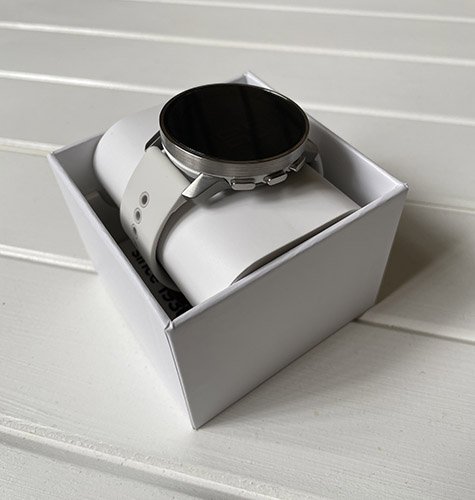 The following features and specs are for the Titanium edition of the 9 Peak. If you’re interested in the standard version, it is available in All Black and Moss Grey for $999.99 AUD RRP.
The following features and specs are for the Titanium edition of the 9 Peak. If you’re interested in the standard version, it is available in All Black and Moss Grey for $999.99 AUD RRP.
- Suunto 9 Peak Titanium $1,199.99 AUD RRP
- Granite Blue Titanium and Birch White Titanium options
- Titanium Grade 5 and Sapphire crystal glass (Titanium version)
- Silicone strap with metal fastening pin
- Weighs 52g, watch face is 43mm wide and 10.6mm deep
- Heart rate and blood oxygen monitoring
- Sleep, weather and GPS tracking
- Over 80 sports modes
- Fast charging
- Integrates with the Suunto app on your smartphone
| Suunto 9 Peak Pros | Suunto 9 Peak Cons |
|---|---|
|
|
Jump to:
- Design, appearance and wearability
- Performance, battery and functionality
- Exercise features and performance tracking
- Should I buy the Suunto 9 Peak?
- Compare phone plans
Design, appearance and wearability
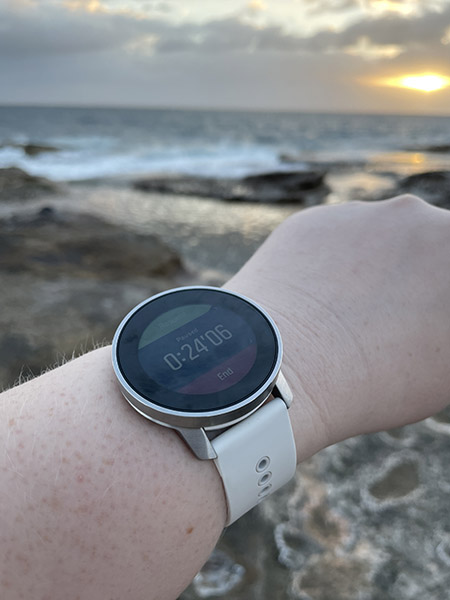
When choosing a smartwatch or fitness watch, the way it looks can be really important, especially if you plan on wearing the watch throughout the day and night — from work to going out to dinner.
Luckily, the Suunto 9 Peak in the Birch White Titanium version that I tried out, is a really nice looking watch. The white details and grey metal make it a really stylish looking device, although the white wristband could possibly be prone to discolouration with time (especially if you exercise, play sports or enjoy any activity where you tend to get dirty).
This is meant to be Suunto’s thinnest watch yet, and when you put it on, it does feel more like the size of a traditional watch compared to the much chunkier smartwatches on the market. Compared to the Suunto 7 I reviewed previously, I didn’t feel the size of this watch got in the way, especially when doing yoga where you need that wrist/hand flexibility, and the thinness made it easy to wear and not particularly imposing.
It’s a fairly comfortable watch to wear throughout the day, although I did find that the silicone strap wasn’t the most comfortable material and you tend to sweat a little underneath. However I suppose the trade off is that it’s easy to clean if it gets dirty or sweaty.
One thing I really liked in the design was the metal fastening pin. Rather than a loop to keep the strap from flapping and getting caught, you fasten the pin into the strap’s holes. This keeps the end of the strap from getting caught, and you also don’t need to constantly adjust the loop to keep the strap in place. This extra functionality would no doubt make a difference during some sports and activities.
Overall, the Suunto 9 Peak Titanium is a really nice looking watch. It’s reasonably comfortable to wear, and the sleek and stylish design also means you can easily wear it when going out without feeling like it looks like a sports watch.
Performance, battery and functionality
The Suunto 9 Peak Titanium version does come with a fairly hefty price tag, so for this price, you’ll definitely expect a quality performance. The good news is that the 9 Peak does deliver the features you’d want from a sports watch at this price.
It’s a simple watch to use — you have three buttons on the right side of the watch face, and in addition to these buttons for navigation, you can also navigate with swipes on the touch screen. The settings are accessible through a long-press of the middle button, or via navigation through the top menu. Sometimes if the watch was idle, you’d need to press the button to ‘activate’ or access certain functions, as a touch on the screen wouldn’t activate it. I suppose this means you can’t accidentally touch or interfere with the screen when idle.
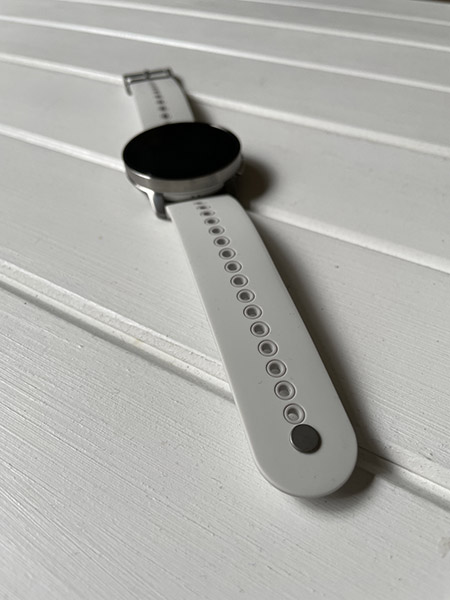 Touching the activated home screen allows you to change what is displayed there next to the days of the week — you can set it to show the date, battery percentage, weekly activity tracking or altitude. Because this feature is quite sensitive to touch, pressing the home screen, which I tend to do instinctively to light up the screen, would result in it changing the ‘extra’ information displayed. This meant I’d then have to cycle through the options to get back to the setting I preferred. While I can see this would be useful for ‘quick access’ of information, it was also annoying at times.
Touching the activated home screen allows you to change what is displayed there next to the days of the week — you can set it to show the date, battery percentage, weekly activity tracking or altitude. Because this feature is quite sensitive to touch, pressing the home screen, which I tend to do instinctively to light up the screen, would result in it changing the ‘extra’ information displayed. This meant I’d then have to cycle through the options to get back to the setting I preferred. While I can see this would be useful for ‘quick access’ of information, it was also annoying at times.
My biggest frustration with this watch overall is working out which features are controlled on the phone, versus in the phone app. It’s not an issue unique to this device, and perhaps it’s my own fault and reading the user manuals upfront would have avoided this. However, I did find that every now and then, I’d have to look something up to see if it was an option, or search for how to do something. I also found that it was tricky to navigate to certain features at times, and where these features were found wasn’t always in the most logical place to me.
For instance, you need to access the middle button menu for both media controls and for the date, battery and notifications. This means you have to swipe across twice to access the date and battery status. While it’s convenient to have the media controls one swipe away, even if you’re currently not playing anything on your phone, it will always display something ready to play based on your phone’s default music player.
However, my own frustrations with navigating the watch were minimal to the overall performance. Once you get the hang of it and know where all the features are, it’s a fairly straightforward watch to operate.
I found notifications a bit frustrating, more so the fact that you can’t really control what notifications appear on your watch. You can either turn notifications on or off, however using the iOS Suunto app, you can’t control which notifications are displayed — it is instead linked to the notifications you have enabled on your phone. While this might not be an issue for some, I find that I only want certain notifications to appear on my watch compared to my phone, so I often just had to switch notifications off altogether.
The stand out for the Suunto 9 Peak is battery life. Battery performance was one feature where the Suunto 7 Titanium I previously tested, had really slipped. However this is not an issue with the 9 Peak whatsoever.
Choosing the setting to keep the watch backlight on will drain the battery — around 80% battery drain on a full day of wear. However, if you keep the backlight setting switched off, so it only lights up when needed, you can get a serious battery performance from the 9 Peak. I tested a full day of use, from 7am to around 6pm, and recorded only 4% battery drain. If you only use the watch for the exercise tracking for an hour or so a day, and not a constant full-day wear, you’ll get several weeks of battery out of this.
When the battery is at 20%, you’ll get a ‘battery low’ notification, and if it’s very low, you’ll get a notification reminding you that if you’re training soon, to charge the watch. However I found in one instance that this notification tended to stay on screen for a while, and interfered with it actually charging. Since you can’t really dismiss this notification, you just need to leave it until it disappears on its own.
The 9 Peak also includes fast charging and comes with a magnetic charger. I was able to charge from 0% to 100% in around an hour, and even a few minutes of charge can give enough of a boost to the battery if you’re heading out and need a little more battery life. However the charger was a little temperamental at times — I found it didn’t always recognise that the watch was attached and ready to charge. It would take several attempts to get the positioning just right so it would start charging, so you’ll want to make sure the watch is actually charging before you leave it.
The general performance of the Suunto 9 Peak is what you would expect of a watch at this price point. It does the basics of what you need, and does them well and with a great battery performance. Despite finding it a little confusing to navigate at times, and having to figure out which settings are app or watch-controlled, you’ll get the hang of it eventually.
Exercise features and performance tracking
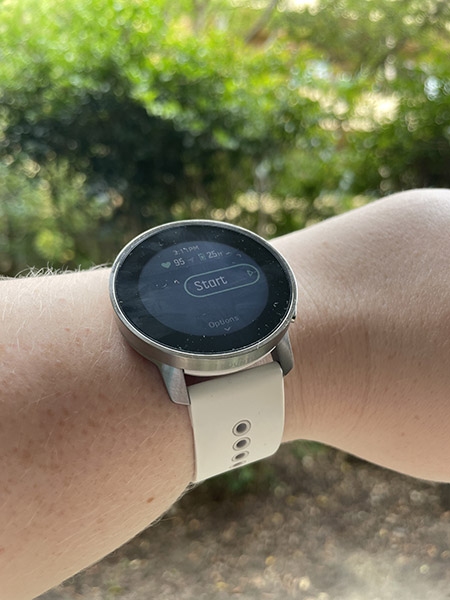 One of the benefits of a sports watch over a smartwatch is the sheer number of performance features and tracking that you get. It’s less of a day-to-day watch and more for serious fitness, sports or adventure enthusiasts.
One of the benefits of a sports watch over a smartwatch is the sheer number of performance features and tracking that you get. It’s less of a day-to-day watch and more for serious fitness, sports or adventure enthusiasts.
That being said, that’s exactly what you can expect from the Suunto 9 Peak. It’s packed with a range of exercise/sports modes and performance tracking, along with some cool extra features. These work hand-in-hand with the Suunto app, which tracks your daily performance and collates all the information you need to keep track of your activities and progress.
There’s a huge selection of exercise modes — over 80 of them — from the basics like walking, running, cycling (indoor and outdoor), basketball and tennis, through to more obscure options like roller skating, motorsports, paragliding, ski touring, snow shoeing and even fishing.
Each mode is tailored to the specific ‘needs’ of those exercises in terms of what information is tracked, shown and made available. For example, using the yoga/Pilates mode will show details like time, heart rate and calories burned, while walking shows additional details like cadence, distance, speed, ascent, descent, steps, etc.
The details you get in the exercise modes is one of the stand-outs for this watch. While I’m not a serious athlete or adventurer and only tested a few exercise modes on this watch, it’s still fun to see more details on your performance beyond the simple time, calories and steps/distance.
In addition to the basic exercise modes, you can customise these further. You can edit settings such as intensity zones, intervals and targets (distance or duration) — setting a duration target gives you a motivational notification when you’re half-way there. There’s also the SuuntoPlus mode with extra features including the Ghost Runner option which helps you set a target pace with a ‘ghost runner’, the Burner option with more insights on how fast you’re burning grams of fat and carbs, plus the Climb feature with insights for hiking and hill repetitions.
It keeps up well and I feel like it does a good job at tracking your activities. GPS compatible activities will show the route you took in the app and you can also set routes. However I seemed to struggle getting GPS to kick in when starting an activity that used GPS tracking. It could have been a positional issue, but I did notice it struggled to find my GPS location at times too. I also found at times the watch wouldn’t connect to my phone straight away when my phone was locked, so you’d need to open the Suunto app to initiate the connection and wait a bit for it to sync up.
When it comes to general performance and health tracking it seems to do a decent job. You can monitor your heart rate, blood oxygen, sleep, calories and steps, while the watch will also track things like altitude and temperature. I found at times that some of these readings didn’t quite add up, such as the watch temperature not always matching the temperature on my phone’s weather app. I especially found the step measuring to be a bit off the mark. The watch tends to read any hand/arm movements as steps, so I would find on occasions of limited movement that it would read much higher than I expected, and these readings from the watch might be contradicted by what the step reading was on my phone.
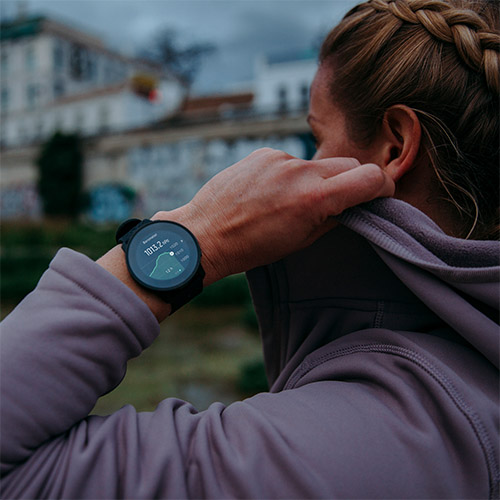
Overall though, the exercise features and the performance tracking of the 9 Peak is excellent. I found there wasn’t much to dislike, bar the potentially inaccurate step readings and occasions where it struggled to measure blood oxygen (despite doing as instructed and keeping my arm very still). It does what you would expect and hope that a sports/fitness watch should do, especially for the price point.
Should I buy the Suunto 9 Peak?
The price point for the 9 Peak is going to be a bit of a barrier for some people. It is a lot to ask, to fork out over $1,000, so for that, the 9 Peak does have a bit of a niche audience. For anyone who has a more limited exercise regime — such as weekly gym visits and a few walks here and there — you might not find much benefit from the 9 Peak. These watches are designed for athletes, adventurers and fitness enthusiasts.
If you fit into that market, there is a lot to love with the 9 Peak. It’s thin and fairly comfortable, whether you’re wearing it for a full day or just for a couple hours of exercise. While there were a few intermittent issues with the overall performance, it certainly wasn’t enough to deter from the experience.
If you’re in the market for a more high-level sports tracker, and you have the cash for it, the Suunto 9 Peak offers a sleek-looking watch packed with some great features, good performance and fantastic battery life.
| Consider the Suunto 9 Peak if | Don’t consider the Suunto 9 Peak if |
|---|---|
| You do enjoy a wide range of exercises/sports and like to track your performance, and you want a watch that looks good enough to wear daily. | You like the basics of a fitness watch, such as calories and steps, but don’t need to track performance. |
Compare phone plans
You’ll need a smartphone to use the the Suunto 9 Peak, especially so you can use it in conjunction with the Suunto app. If you’ve been looking to upgrade to a new mobile phone, the following tables include the latest popular devices from Apple and Samsung. Switch between the tabs to view phone plans for each device.
The following table shows a selection of 24-month 128GB Apple iPhone 13 Pro plans on Canstar Blue’s database, listed in order of standard cost, from the lowest to highest and then by data allowance, largest to smallest. Use our comparison tool to see plans from a wide range of telco providers. This is a selection of products with links to referral partners.
The following table shows a selection of 24-month 128GB Samsung Galaxy S21+ plans on Canstar Blue’s database, listed in order of standard monthly cost, from the lowest to highest and then by data allowance, largest to smallest. Use our comparison tool to see plans from a range of other providers. This is a selection of products which may contain links to a referral partner.

Product used for review/testing was a free sample provided by Suunto.

Share this article